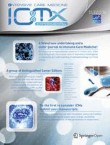Effects of early hemodynamic resuscitation on left ventricular performance and microcirculatory function during endotoxic shock
Microcirculation and macrohemodynamics are severely compromised during septic shock. However, the relationship between these two compartments needs to be further investigated. We hypothesized that early resusc...
